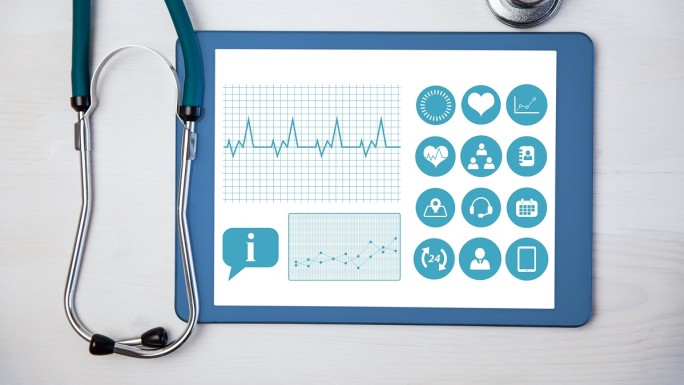Overview about e-prescription: Evolution from traditional prescriptions
At the forefront of healthcare technology transformation, there is a new technology in prescribing that has become popular recently. It is called the electronic prescription, commonly known as e-prescription.
This technological leap not only promises greater efficient prescribing but also significantly improves patient care. As we embark on this exploration, let's unveil the fundamental elements and benefits that create e-prescription, offering a comprehensive overview of its impact on healthcare settings.
What is e-prescription?
E-prescription refers to the digital version of traditional paper prescriptions that healthcare providers generate and send to pharmacies. This digital format enhances the efficiency, accuracy, and security of the prescription process in healthcare. Instead of handwritten or printed paper scripts, e-prescriptions are created and transmitted electronically through a secure and standardized system.

Benefits of e-prescription
To pharmacies
Efficiency and workflow streamlining: E-prescriptions expedite the prescription fulfillment process, allowing pharmacies to efficiently process and dispense medications. This helps streamline workflow, reduce wait times, and enhance overall operational efficiency.
Reduced errors and improved accuracy: Digital prescriptions minimize the risk of errors associated with illegible handwriting. Pharmacies receive clear and accurate medication orders, reducing the likelihood of dispensing errors and enhancing patient safety.
Integration with pharmacy systems: E-prescriptions seamlessly integrate with pharmacy management systems, enabling automatic entry of prescription details. This integration reduces the need for manual data entry, saving time and minimizing the potential for transcription errors.
Enhanced inventory management: Electronic prescriptions provide pharmacies with real-time information about medication orders. This facilitates better inventory management, allowing pharmacies to maintain optimal stock levels and reduce the risk of medication shortages.
Improved communication: E-prescription systems enable secure and direct communication between healthcare providers and pharmacies. This direct communication channel supports clarifications, and prescription verifications, and enhances collaboration.
To healthcare providers
Access to patient medication history: E-prescription systems are often integrated with electronic health records (EHRs), giving healthcare providers immediate access to a patient's medication history. This access improves decision-making by considering the patient's existing prescriptions and potential drug interactions.
Real-time decision support: Some e-prescribing systems provide real-time decision support, alerting healthcare providers to potential drug interactions, allergies, or dosage issues. This feature enhances prescription safety and supports informed decision-making.
Enhanced prescription legibility: Digital prescriptions eliminate the challenges associated with illegible handwriting. Clear and legible electronic prescriptions contribute to improved accuracy in medication dispensing and reduce the risk of medication errors.
Efficient prescription renewals: E-prescription systems often support efficient prescription renewals. Healthcare providers can electronically authorize prescription refills, promoting timely medication access for patients and reducing administrative burdens.
Time savings: E-prescribing reduces the time spent on traditional prescription-related tasks, such as writing and faxing prescriptions. This time savings allows healthcare providers to focus more on patient care and engagement.
To patients
Convenience: E-prescriptions eliminate the need for patients to carry physical paper prescriptions. The prescription details are securely transmitted to the pharmacy of their choice, offering convenience and reducing the risk of misplaced or lost prescriptions.
Faster medication access: E-prescriptions expedite the prescription fulfillment process, enabling patients to access their medications more quickly. This is particularly beneficial for individuals with acute conditions who require immediate treatment.
Improved medication adherence: E-prescriptions may include detailed information about the prescribed medications, dosages, and instructions. This clarity enhances patient understanding, contributing to improved medication adherence.
Secure and private transactions: The electronic transmission of prescriptions is conducted through secure channels, ensuring the privacy and confidentiality of patient health information. This contributes to patient confidence in the healthcare system.
Access to prescription history: Patients can have better visibility into their prescription history through EHR-integrated e-prescription systems. This access empowers patients to actively manage their health and communicate effectively with healthcare providers.
Limitations of e-prescription
While e-prescription offers numerous benefits in terms of efficiency, accuracy, and patient care, they also have certain limitations and challenges that need to be considered.
Downtime and system failures
Like any digital system, e-prescription platforms can experience downtime or technical issues. System failures may disrupt the prescription process and impact patient care.
Lack of standardization
Interoperability issues arise when different systems use varying standards for e-prescription data. The lack of standardized formats and protocols can hinder seamless communication between different healthcare entities.
User adoption and training
Healthcare providers, especially those accustomed to traditional paper-based methods, may resist the shift to e-prescribing. Overcoming resistance to change and ensuring comprehensive training are crucial for successful adoption.
Medication list accuracy
E-prescription systems rely on accurate and up-to-date medication histories. Incomplete or outdated information may lead to prescription errors, especially if patients use multiple pharmacies or healthcare providers.
Pharmacy integration issues
Not all pharmacies may have advanced electronic systems for receiving and processing e-prescriptions. Integration challenges with diverse pharmacy systems can affect the efficiency of the prescription fulfillment process.
Prescription data entry errors
While e-prescription systems reduce the risk of handwritten errors, data entry mistakes can still occur. Providers may input incorrect medication names, dosages, or patient details, leading to potential errors.
Patient privacy and data security
E-prescription systems must adhere to strict privacy and security standards. Concerns about the security of patient health information, including the risk of unauthorized access or data breaches, can impact adoption.
Implementation expenses
The initial costs of implementing e-prescription systems, including software, training, and infrastructure upgrades, can be a barrier for some healthcare providers, especially smaller practices.
Meet cost problems in elementing e-prescription? Our IT healthcare experts can help you. Contact us now!
Prescription duplication
In some cases, technical glitches or user errors may result in the unintentional duplication of prescriptions, potentially leading to medication errors.
Addressing these limitations requires ongoing efforts from healthcare organizations, technology developers, and regulatory bodies. Continuous improvement in system design, standardization, and user education can help mitigate these challenges and enhance the effectiveness of e-prescription systems.
Future trends of e-prescription
The future of e-prescription is likely to see continued advancements driven by technological innovations, regulatory changes, and evolving healthcare needs. Here are some trends in the near future of e-prescription:
Enhanced security by blockchain integration
Blockchain technology may be integrated into e-prescription systems to enhance security and privacy. Blockchain's decentralized and tamper-resistant nature can provide a more secure platform for managing patient data and prescription information.
Artificial intelligence (AI) and decision support
The integration of AI algorithms within e-prescription systems can provide advanced decision support to healthcare providers. AI can analyze patient data, consider potential drug interactions, and offer personalized medication recommendations, improving prescription accuracy.
Seamless telehealth prescriptions
With the increasing prevalence of telehealth services, e-prescription systems are likely to seamlessly integrate with telehealth platforms. This will enable healthcare providers to electronically prescribe medications during virtual consultations.
Mobile prescription apps
The development of mobile applications specifically designed for e-prescriptions can empower patients to receive and manage their prescriptions through smartphones and other mobile devices. This can improve patient engagement and medication adherence.
Patient-centric features
Future e-prescription systems may prioritize patient-centric features, allowing patients easy access to their prescription information and providing educational resources about prescribed medications. This can empower patients to actively manage their health.
Unified regulations
Regulatory bodies are likely to play a key role in shaping the future of e-prescription. Efforts to establish unified and standardized regulations across regions can facilitate consistent implementation and compliance.
Health data from wearables
E-prescription systems may integrate with wearable devices to access real-time health data. This integration can provide healthcare providers with additional insights into a patient's health status and medication response.
Advanced e-prescription systems may incorporate real-time monitoring capabilities to track patient adherence. This can help healthcare providers identify and address potential issues with medication compliance.
Data analytics tools
E-prescription systems may incorporate advanced analytics tools to provide healthcare organizations with valuable insights. These insights can support decision-making, improve prescription practices, and contribute to population health management.
Conclusion
As we conclude this overview, it is clear that e-prescription is more than a technological adaptation—it represents a fundamental shift towards precision, collaboration, and patient-centric care. As this digital frontier continues to unfold, embracing the power of e-prescription becomes not just a choice but a strategic imperative. The more we understand about this new type of prescription, the more we can pave the way for a future where healthcare is as connected and efficient as the technology that pushes it forward.









